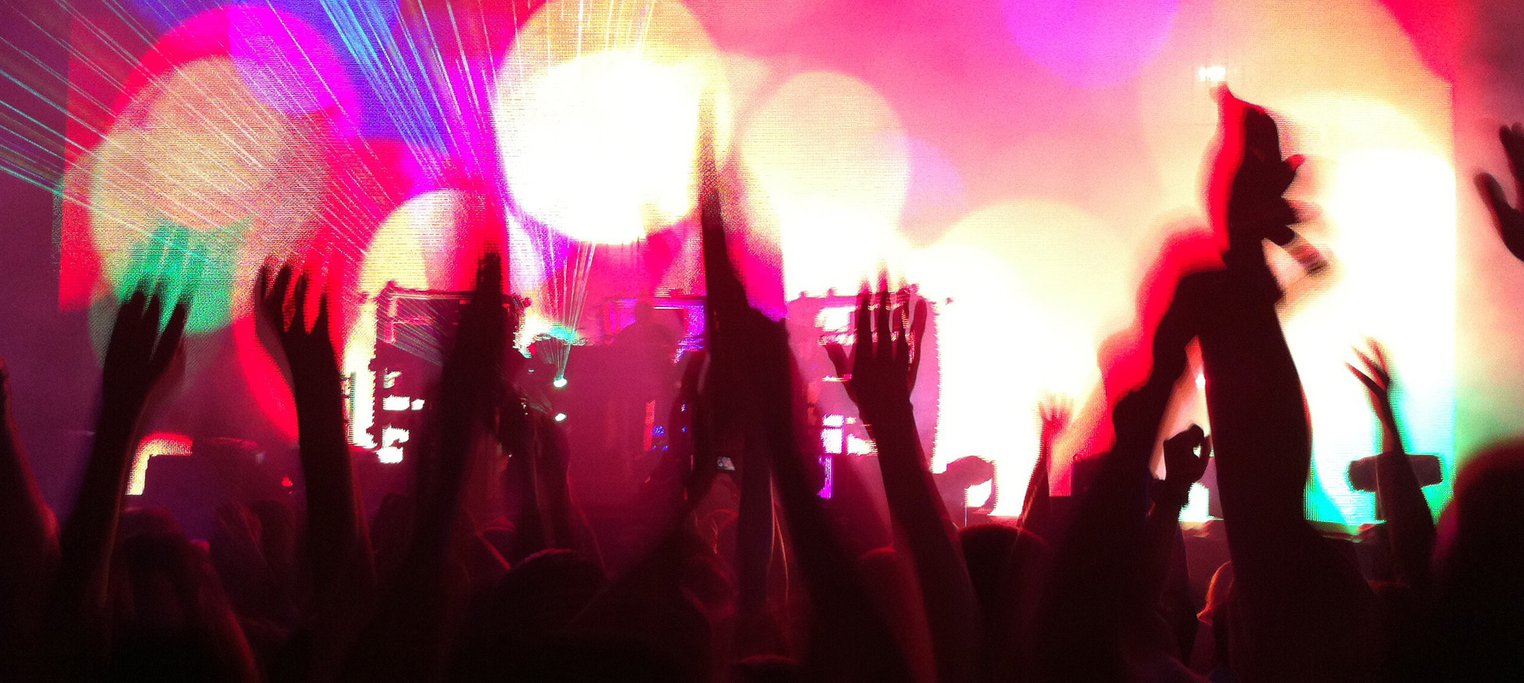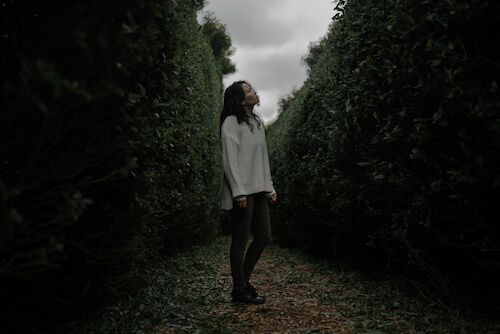December 2, 2024
GHB and harm reduction

What is it?
GHB (gamma hydroxybutyrate) is a depressant drug that usually comes as a bitter or salty liquid, often sold in small bottles or vials like fish-shaped soy sauce containers.1 It is also known as liquid ecstasy or liquid E.2,3
It was originally produced as an anaesthetic in the 1960s but was withdrawn in many countries due to unwanted side effects. Since the 1990s, GHB has become an illegal party drug.2
In smaller doses, GHB can cause mild highs, with people feeling euphoria, increased wellbeing, and increased libido.3
In higher doses, it can cause sedation and memory impairment.1
Cause for concern
Compared to other illicit drugs in Australia, the use of GHB is quite rare. However, use has increased over the past two decades.
- According to the National Drug Strategy Household Survey in 2023, 1.2% of people reported having used GHB at least once in their lifetime.4
- In Victoria, the number of calls received each year by the Alcohol and Drug Information Service (Directline) regarding GHB increased from 31 in 2009, to 201 in 2020.5
- In Victoria, GHB-related ambulance call-outs rose from 685 in 2013/14 to 2,979 in 2022/23.6
Alarmingly, GHB-related deaths in Australia have increased in recent years.
Between 2016 and 2023, there were 166 GHB-related deaths, more than triple the 51 deaths recorded between 2000 and 2015.7
Most of these deaths did not occur in a public place and nearly 70% of cases were men. The majority of deaths were unintentional, reflecting the danger of overdose with GHB.7
GHB side effects
Common side effects of GHB can include nausea, headaches, tremors and shaking.1
The biggest risk of using GHB is overdose. That’s because there is very little difference between the amount needed to feel a high and the amount that can cause an overdose.1
Doses over 2ml are increasingly toxic and can cause a combination of symptoms such as irregular breathing, dizziness, confusion, hallucinations, blackouts and vomiting, which can be fatal.8
Safety tips for using GHB:
Use of any drug can have risks. If you choose to use GHB:
- Use in a trusted environment with people you feel comfortable with.
- Don’t use GHB alone.
- GHB has a steep dose response, meaning small increases in dose can result in big increases in effect, and overdose can happen easily.
- GHB solutions vary in strength. Measure doses to the nearest 0.1ml using a syringe barrel without a needle.
- Record the time and amount you used.
- Wait at least two hours before taking another dose. GHB accumulates within the body. This means that repeat doses will build on each other. It is a good idea to take a smaller amount if redosing.
- Food reduces the absorption of GHB which may delay the release of the drug into a person’s system. This can increase the risk of overdose. Wait at least two hours after eating if you are going to take GHB.9
If you suspect that someone has overdosed, always call an ambulance on triple zero (000). If the person is unconscious, place them on their side in the recovery position – this will clear their airways. Emergency services are there to help and can provide instructions over the phone.
Using GHB with alcohol and other drugs
If you choose to use GHB avoid mixing it with other alcohol and other drugs.
Using GHB in combination with alcohol is dangerous even in small amounts.
Mixing GHB with alcohol significantly increases the risk of serious side effects, including memory loss, loss of coordination, and unconsciousness. There is also a high risk of choking on vomit while unconscious, which can be life-threatening.9,10
There is a much higher risk of overdose if you use GHB at the same time as other depressant drugs like benzodiazepines (Valium, Xanax) and opioids like heroin or oxycodone (Endone).
That’s because combining these drugs increases the risk of slow and shallow breathing.1,2
It’s also dangerous to take GHB with stimulant drugs such as MDMA, cocaine, ice, or amphetamines. When combined, these drugs work against each other.
GHB slows down signals in your central nervous system, while stimulants speed them up, which can cause severe heart strain.3
A report into GHB-related deaths in Australia from 2001–19 found more than 90% of people who died also had substances other than GHB in their blood. Methamphetamine was the most common drug found in these cases.2,7
Dependence and withdrawal
Regular, heavy use of GHB can cause dependence. And, if frequent use stops suddenly, this can lead to withdrawal.2,8
GHB withdrawal is similar to alcohol withdrawal, varying from mild to severe.
People using regularly, but in smaller doses, may experience withdrawal symptoms such as sweating, nausea/vomiting, headaches and tremors.8
People using up to 30mls per day - or more - face an increased risk of severe withdrawal symptoms that might need specialist treatment.
These symptoms include anxiety, delirium, seizures, paranoia and visual and auditory hallucinations (seeing and hearing things that aren’t really there).2,8
People dependent on GHB should ideally go through withdrawal in a supervised environment.11
You can call the National Alcohol and other Drug Hotline to speak to someone about treatment services: 1800 250 015
For more information on alcohol and other drug treatment options, check out Seeking help.here.
GBL and 1,4-BD
Gamma-butyrolactone (GBL) is chemically similar to GHB and sold and taken in the same way. It converts to GHB in the body.
While its effects are the same as GHB, GBL is two to three times more potent and kicks in more quickly. However, the effects don’t last as long as GHB.12-14
The same concerns around GHB apply to GBL:
- it’s easy to overdose
- taking it with other drugs should be avoided
- people who use it a lot risk developing a dependence, which lead to strong withdrawal symptoms if you suddenly stop using it.13
1,4-BD (1,4-butanediol) is a chemical precursor to GHB and its effects on the body are similar. It is often sold as GHB due to the similarities.9,15
1,4-BD typically has a lower potency and slower onset, compared to GHB, but its effects last longer.14
Information and support
If you decide to use GHB, or GHB-like drugs, it’s important to understand and consider the risks, as well as the strategies that you can use to reduce harm.
If you’re concerned about your own or someone else’s GHB use, you can call the National Alcohol and Other Drug Hotline for free, anonymous and non-judgemental information: 1800 250 015. It’s confidential too.
Further Resources
For more information on GHB and other drugs, check out the links below.
Path2Help
Not sure what you are looking for?
Try our intuitive Path2Help tool and be matched with support information and services tailored to you.

- Black E, Shakeshaft A, Newton N, Teesson M, Farrell M, Rodriguez D. GHB - What you need to know. UNSW Sydney: National Drug and Alcohol Research Centre; 2014 [cited 26/09/2024]
- Darke S, Peacock A, Duflou J, Farrell M, Lappin J.Characteristics and circumstances of death related to gamma hydroxybutyrate (GHB). Clin Toxicol (Phila). 2020; 58(11):1028-33.
- National Drug and Alcohol Research Centre. GHB - Fact sheets 2021. UNSW; 2021 [cited 26/09/2024]
- The Australian Institute of Health and Welfare. National Drug Strategy Household Survey 2022-2023, Illicit Drugs, Supplementary data tables 2024: Table 5.2. [cited 01/10/2024]
- Turning Point.AODstats by Turning Point, DirectLine. 2024 [cited 26/09/2024]
- Turning Point. AODstats by Tunring Point, Ambulance attendances. 2024 [cited 26/09/2024]
- Darke S, Duflou J, Chrzanowska A, Farrell M, Lappin J, Peacock A. Changes in the rates and characteristics of gamma hydroxybutyrate (GHB)-related death in Australia, 2001–2023. Drug and Alcohol Review. 2024; n/a(n/a). [cited 02/10/2024]
- SA Health. Gamma hydroxy butyric acid (GHB) withdrawal management. 2024 [cited 26/09/2024]
- Hi-Ground. GHB. [cited 01/10/2024]
- Tripsit. Drug Combinations. [cited 08/08/2024]
- Manning V, Arunogiri S, Frei M, Ridley K, Mroz K, Campbell S, et al. ALCOHOL AND OTHER DRUG WITHDRAWAL GUIDELINES. Turning Point; 2018 [cited 30.10.2024]
- Beardsley P, Harris LS, Bodenschatz C, Beran D. Gamma‐butyrolactone (GBL) Critical Review Report Agenda item 4.3. Geneva: World Health Organization; 2014 [cited 26/09/2024]
- van Amsterdam J, Brunt T, Pennings E, van den Brink W. Risk assessment of GBL as a substitute for the illicit drug GHB in the Netherlands. A comparison of the risks of GBL versus GHB. Regul Toxicol Pharmacol. 2014; 70(2):507-13. [cited 01/10/2024]
- Psychonaut Wiki. 1,4-Butanediol. 2024 [cited 01/10/2024]
- Tay E, Lo WKW, Murnion B. Current Insights on the Impact of Gamma-Hydroxybutyrate (GHB) Abuse. Subst Abuse Rehabil. 2022; 13:13-23. [cited 01/10/2024]


